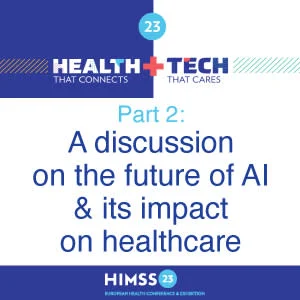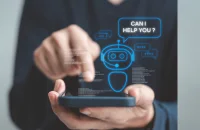Question 1
For Ms. Lee, you mentioned the obstacles and challenges to the deployment and acceptance of the broader saturation of digital environments. I wanted to ask for your comment on the obstacle of installed or legacy systems that operate in the fundamentally enterprise environment. I don't think that Cerner and Epic are going to go quietly into the night and be obviated or eclipsed by the technology that you've described. Would you or any of the other panellist’s care to comment on how we get past that build wall?
Ms. Lee Kim (Senior Principal Cybersecurity & Privacy, HIMSS)
I believe education is key in addressing the challenges associated with legacy systems and broader deployment of digital environments in healthcare. Education plays a significant role in enabling various stakeholders, including end-users, policymakers, and technology developers, to understand the benefits, risks, and potential solutions related to digital transformation.
Dr. Michael Kaldasch (CEO and Founder, Aimedis)
You bring up a crucial point regarding the hardware aspect and the existing infrastructure in healthcare.
What we do is we adapt the system in a way that is interoperable. We Integrate file, so it can communicate with the existing hardware and with the existing software that is already there on the market. So, it's very important, I think, that we need to adapt digital systems in a way that is interoperable with the existing hardware and software. We don't build data silos or improve the program so that is just there for themselves, but we improve it so that it flawlessly fits into the existing healthcare environment.
Ms. Lee Kim
This is the beauty of plug and play; you just must plug and play it.
Hugo Paredes (Senior Researcher INESC TEC & UTAD)
If you look at the virtual reality prepared, we are four technological partners, three of which already have their own products; collaboration among technological partners becomes crucial. What we do is leverage the strengths and capabilities of each partner's products and create a system of systems so they can we can create something new based on their products. By integrating the different VR technologies and products, we can put all these pieces together and create new things, whereby we can harness their individual functionalities while ensuring they operate together seamlessly. This approach allows us to provide personalised experiences and cater to the individual requirements of users. We can create new services and solutions that meet the unique needs of each user.
Question 2:
I live in the Netherlands, in the north of the Netherlands, with a high proportion of people with low literacy and low digital literacy. At the same time, these people are on average less healthy than the rest of the Netherlands. I'm very much interested in whether VR can help these people by providing them with explanations about their disease.
I'm a researcher. I see in my studies that often patients have no idea why they use medication. So maybe VR can help patients with that. I'm curious whether you have done any studies that have an efficacy and whether know anything about what does not work?
Dr. Michael Kaldasch
Thank you for raising this important question. VR can be a powerful tool for visualising and explaining medical procedures and how the medication works, especially for elderly patients who may face challenges in using the hardware.
But most of the time I speak to my grandmothers. A virtual environment can graphically demonstrate the process. For example, for individuals with diabetes who need to be applying insulin, you can show this in a virtual environment i.e. users can see how to test their blood sugar levels. This type of visual representation helps users to safely understand the steps involved.
Dr. Michael Kaldasch
Our platform, Avalon, is designed as an open ecosystem that welcomes cooperation with other startups in the VR space. We offer spaces within Avalon for these companies to place their applications and make them available to the community using the platform. It's a bit like the concept of Amazon, where various sellers can offer their services.
Whatever you would love to do, you can use Avalon to do that with your patients. The flexibility of our platform allows you to build your own applications and integrate them within Avalon. We support companies and startups, and building these applications and offering it to the patients because there are so many millions of ways to use this technology. Whatever you can imagine in terms of using VR, you can bring it to life through coding and design within Avalon.
Source: HIMSS23Europe










